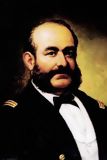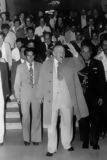
The AIgorythm project

Playwright and actor

Novelist

Writer and poet

Volleyball player

Italian-Peruvian naturalist and geographer

Singer and percussionist

Last Inca emperor

Politician, former prime Minister

Journalist and TV host

Poet

Inca warrior

Actor and comedian

Biophysicist

Poet

Doctor and researcher

Businessman, Interbank group

Journalist and writer

Poet and writer

Singer and songwriter

Writer

Film director, Berlin Golden Bear winner

Football player

Writer and journalist

Doctor and scientist

Photograph

Chess player

Industrialist

Former general

Specialist in public health

Actress and singer

Afro-Peruvian music singer

Mathematician and engineer

Indigenous chronicler

Neurologist and anthropologist

Painter

Football player

National hero, military leader

Intellectual and reformer

Chef and entrepreneur

Fashion designer

Singer-songwriter

TV presenter

Marathon runner

Indigenous Peruvian chronicler

Theologian

Former national team captain

Economist and former health minister

Inca princess

Writer and television host

Folk musician

Poet and guerrilla

Former UN secretary-general

Chef, known for fusion cuisine

Football player

Peruvian aviation pioneer

Poet and artist

Marxist philosopher and writer

Industrialist and businessman

Novelist and ethnologist

Painter and muralist

Opera tenor

Fashion designer

Cardinal of Lima

Peruvian tennis player

Football coach

Leader of the indigenous rebellion

Military hero

Latin singer

War of the Pacific hero

The youngest mother in history

Politician

Creole music singer

Tennis player

Musician

Writer and politician

Politician and founder of the Christian Democratic Party

Founder of Sodalitium Christianae Vitae

Archaeologist and anthropologist

Military leader and politician

Television host

Actress and singer

Contemporary sculptor

Women’s rights activist

Beauty queen

Astrophysicist

Heroine of independence

Mathematician and archaeologist

Historian and anthropologist

Military figure and historical figure

Fashion photographer

Writer, Nobel Prize in Literature, Politician

Revolutionary leader

Environmental activist

Leader of the indigenous rebellion

Musician from Gaia band

War hero

Military leader and politician

Chef, known for Nikkei cuisine

Volleyball coach and former player

Environmental activist

Television personality

Writer

Football player

Epidemiologist and former health Minister

Inventor and aerospace pioneer

Soldier and inventor

Rock singer

Chef and co-owner of Central restaurant

Painter

Football player

TV presenter and actress

Actor

Writer and historian

Journalist and lawyer

Archaeologist, founder of Caral site

Monk and Saint

Saint, patron of Latin America

Physicist and engineer

World champion surfer

Actress

Oncologist

Singer, Latin Grammy winner

Former mayor of Lima

Singer

Actress

Former football player

Painter

Former football player

Painter

Inca leader

Archbishop, saint

Leader of the indigenous rebellion

Revolutionary indigenous leader

Diplomat and intellectual

Sculptor and painter

Political leader, founder of APRA

Lawyer and Former prime minister

Chef of Central restaurant

Former head of secret services

Popular singer

Fashion designer

Exotic music singer
Túpac Amaru II, whose real name was José Gabriel Condorcanqui Noguera, was born in 1738 in Surimana, near Cuzco. He is considered one of the most important indigenous leaders in Latin American history, having led the largest anti-colonial uprising in Peru during the 18th century. His rebellion, which began in 1780, left a significant mark on Peruvian history and is now a symbol of indigenous resistance against colonial oppression. His influence extends far beyond Peru and continues to inspire liberation movements throughout Latin America.
Túpac Amaru II was born into a noble family of Incan descent, directly linked to Túpac Amaru I, the last Inca emperor executed by the Spanish in 1572. As a royal descendant, he enjoyed a privileged status that allowed him access to formal education in Spanish institutions. He studied at the San Francisco de Borja College in Cuzco, where he learned Latin, history, law, and theology. Despite his European education, he never forgot his indigenous roots, forging a bicultural identity that allowed him to deeply understand the injustices faced by his people.
Upon inheriting the titles of cacique of Tinta and Pampamarca, Túpac Amaru II became an intermediary between colonial authorities and indigenous communities. This position gave him firsthand knowledge of the injustices perpetrated by the Spanish authorities, particularly the mita system, which forced indigenous people to work under brutal conditions in mines and other colonial projects. These abuses, coupled with the increased taxes imposed by the Bourbon reforms, fueled his desire to liberate his people.
The Bourbon reforms introduced by the Spanish Crown in the 18th century had profound repercussions throughout the empire, especially in its American colonies. These reforms aimed to increase state revenue by raising taxes and reinforcing the mita system. This system forced indigenous people to work for extended periods under harsh conditions, particularly in silver mines, and the taxes imposed on them reached unbearable levels.
These measures, along with the ongoing oppression of the indigenous population, triggered widespread discontent. Túpac Amaru II, a direct witness to this exploitation, felt compelled to restore the dignity of his people and end colonial oppression. In November 1780, he launched the rebellion by capturing and executing Antonio de Arriaga, the corregidor of Tinta, a symbolic figure of the oppressive regime.
On November 4, 1780, Túpac Amaru II initiated the rebellion by executing Antonio de Arriaga. This act marked the beginning of a massive uprising that would shake the Viceroyalty of Peru and extend beyond its borders. Thousands of indigenous people, mestizos, and even some criollos joined his ranks, seeing in him a leader capable of ending decades of injustice. The rebels' early victories created hope for overthrowing Spanish rule.
Despite these initial successes, Túpac Amaru II's rebellion faced several challenges. On one hand, he lacked adequate military resources to confront the Spanish army, which, though weakened, remained powerful. Additionally, internal divisions among the rebels, particularly between those who sought complete independence and those advocating only for reforms, weakened the movement's effectiveness.
After several months of fighting, the rebellion began to falter under the pressure of Spanish forces. In April 1781, Túpac Amaru II was captured after a series of defeats. The Spanish, determined to crush all forms of rebellion, used brutal tactics to regain control of the insurgent regions.
On May 18, 1781, Túpac Amaru II was executed in Cuzco in a horrific manner. The Spanish colonial authorities, seeking to make an example of him, attempted to quarter him alive by tying his limbs to horses. However, this barbaric act failed, and he was eventually executed by decapitation. His death, far from extinguishing the spirit of resistance, made him a martyr in the eyes of his followers and future generations.
Although Túpac Amaru II's rebellion was suppressed, its impact was profound and long-lasting. He became a symbol of resistance against colonial oppression and a hero for indigenous peoples. His name is forever linked to the struggles for freedom and equality, not only in Peru but throughout Latin America. The ideals he embodied inspired liberation movements across the continent, including the independence struggles of Latin American countries in the 19th century.
In the 20th century, his name was adopted by several revolutionary movements, particularly guerrilla groups in South America, who saw in him an iconic figure of indigenous and anti-imperialist resistance. The Túpac Amaru movement in Peru, for example, directly drew its inspiration from his name and revolutionary legacy.
Túpac Amaru II is now recognized as one of the first major revolutionary leaders in Latin America. Although his rebellion was brutally crushed, it laid the groundwork for future struggles for independence and the rights of indigenous peoples. Through his courage, leadership, and vision of a more just society, he left an indelible legacy that continues to resonate in the contemporary history of Latin America.